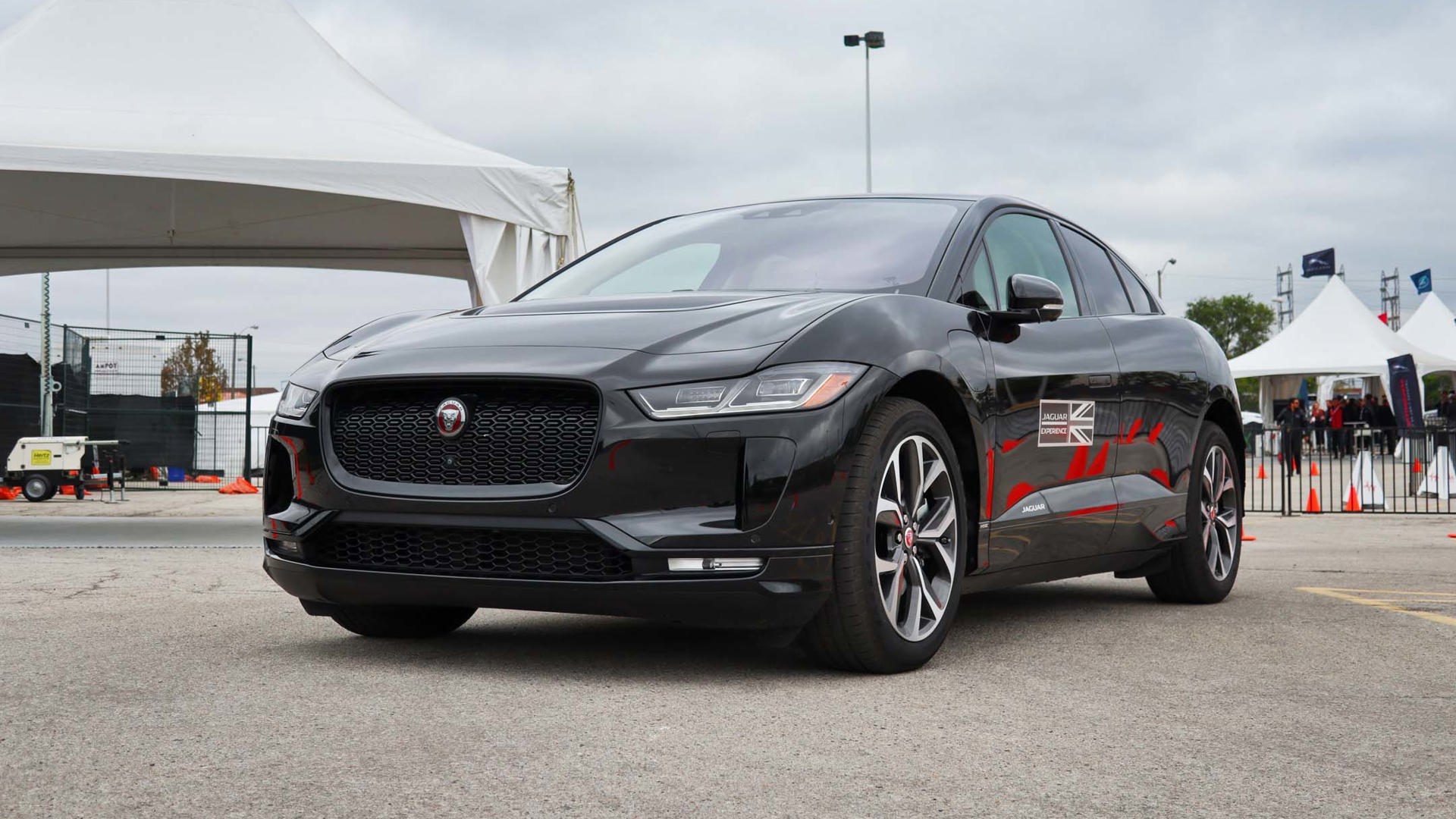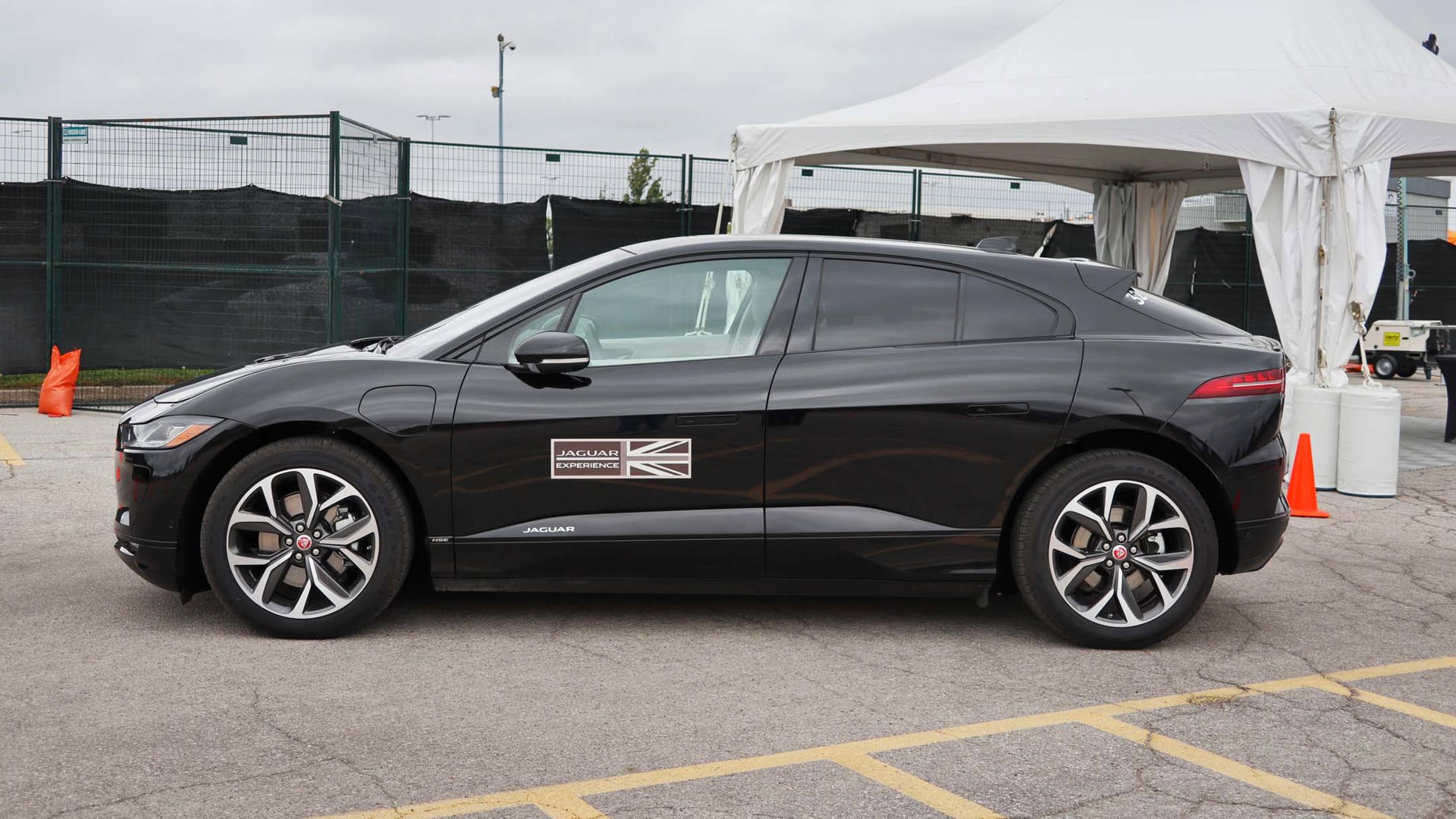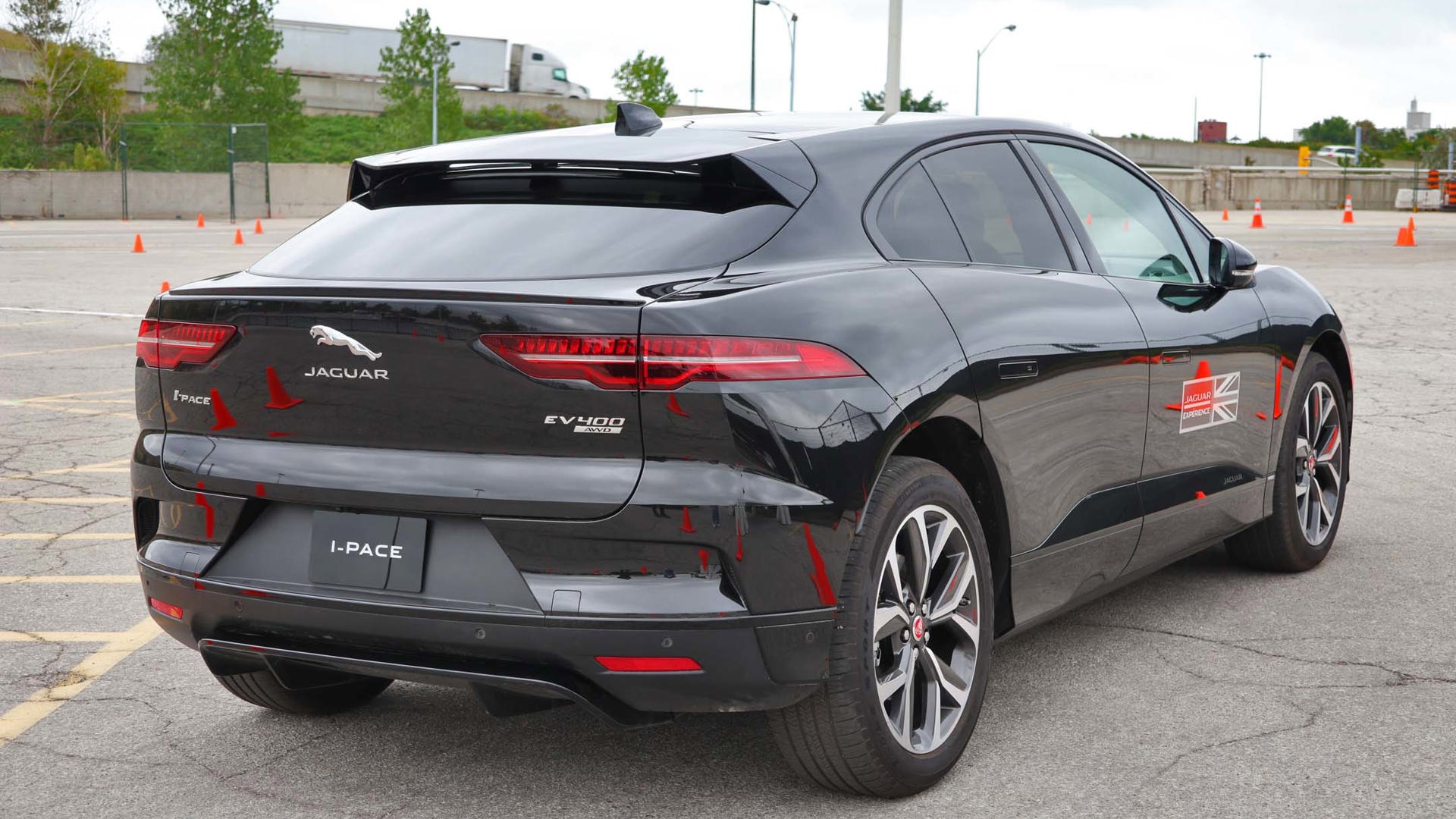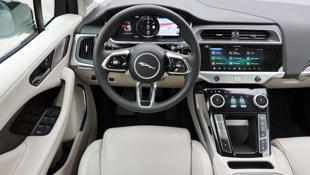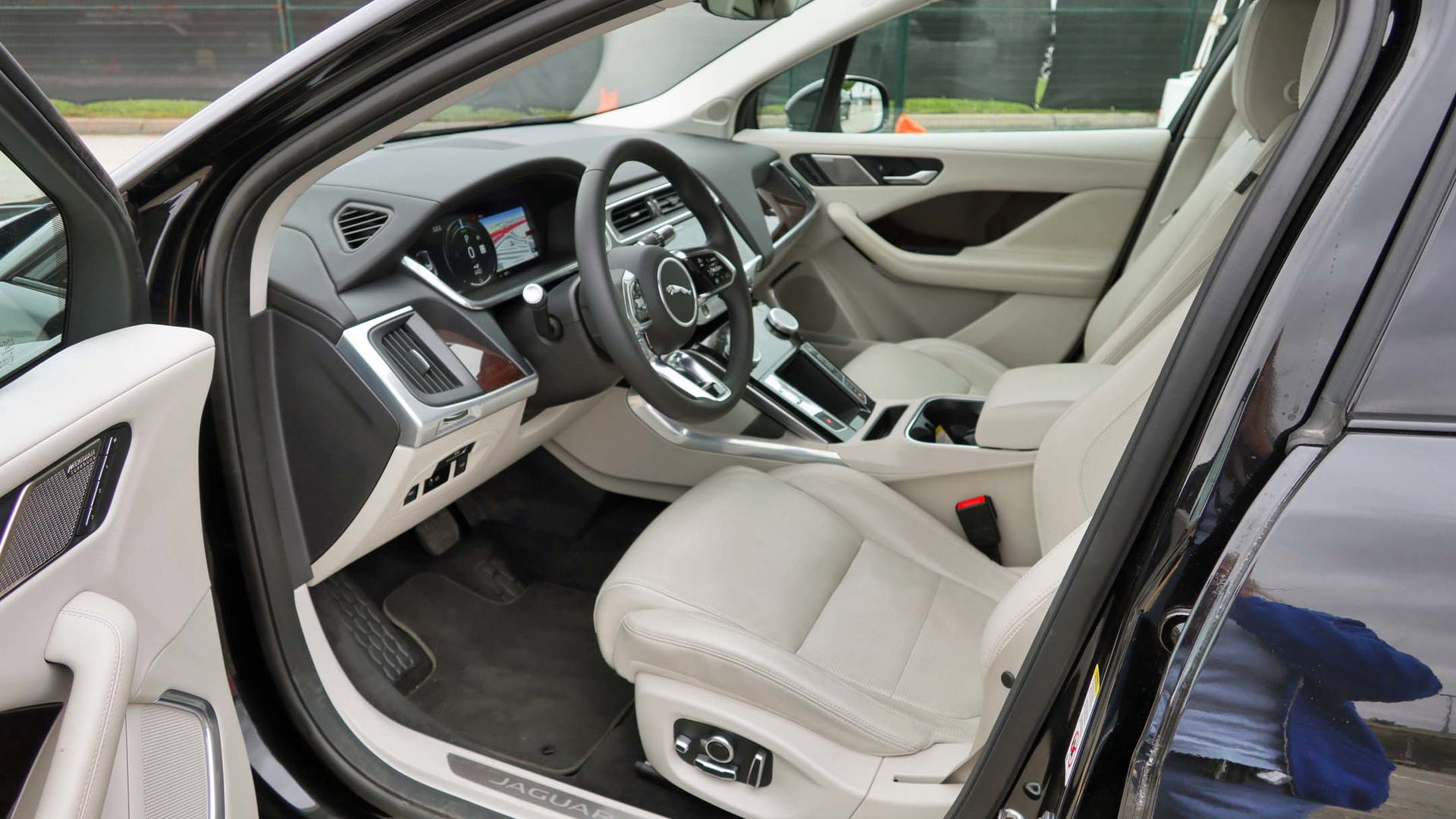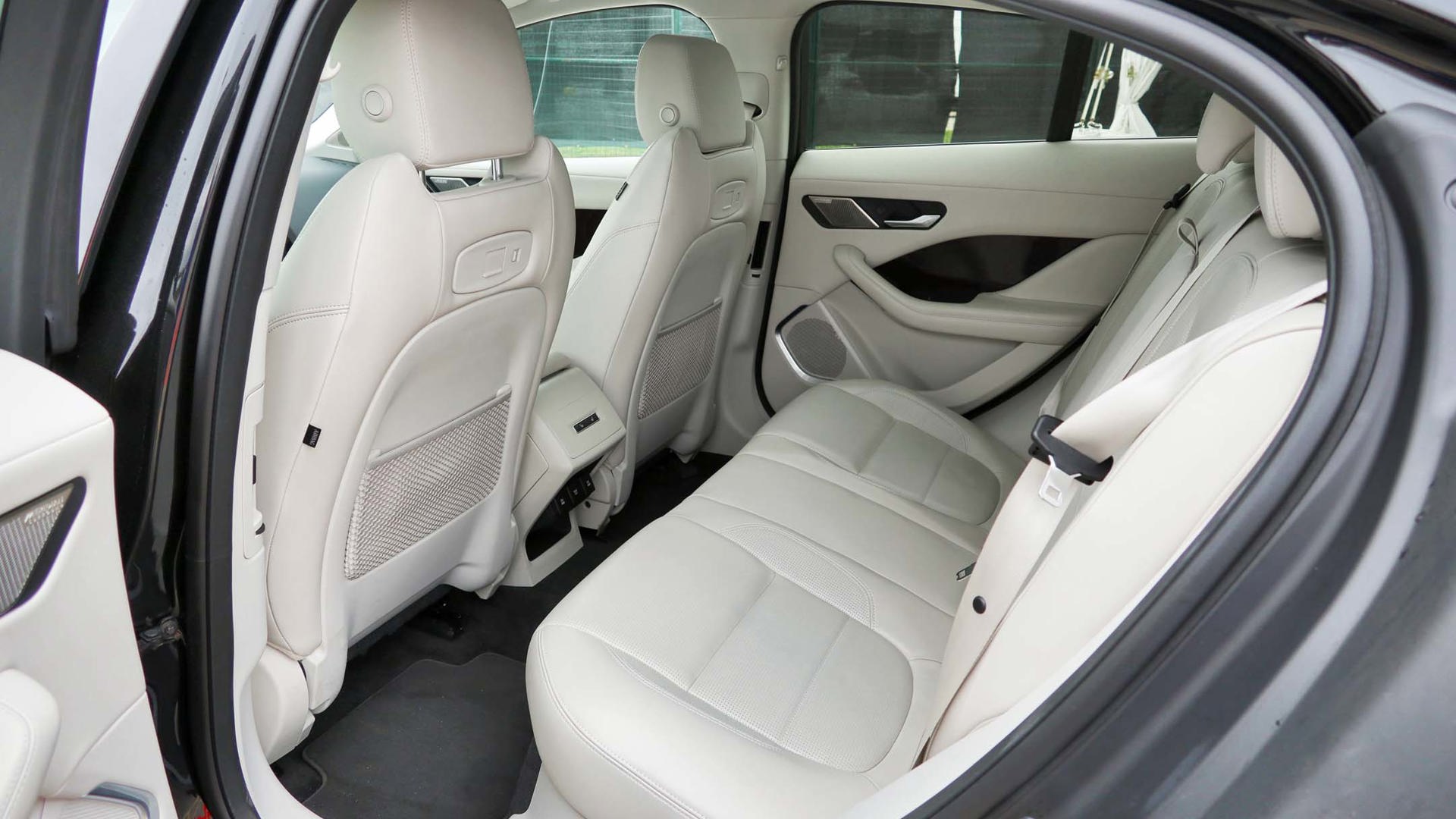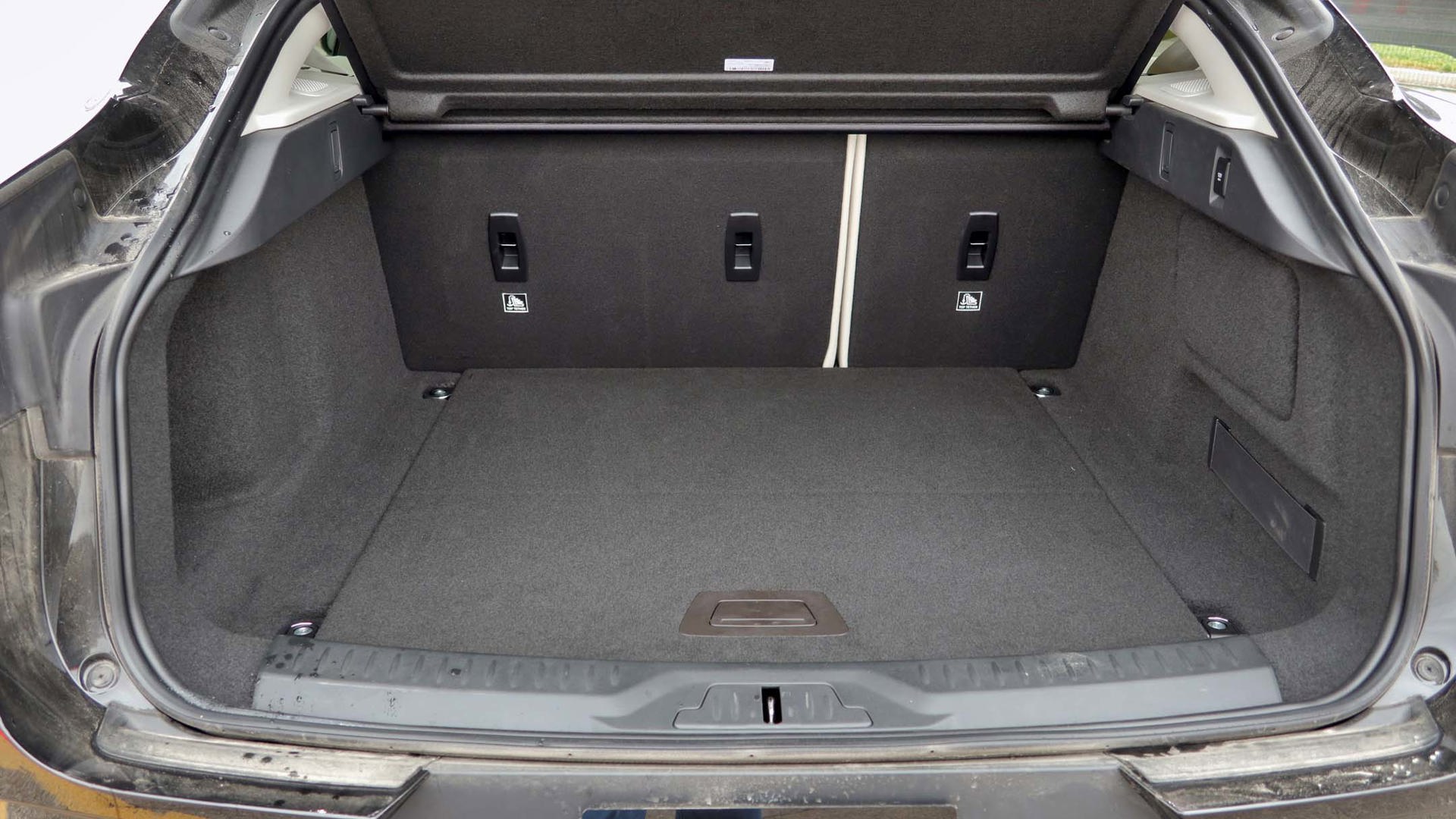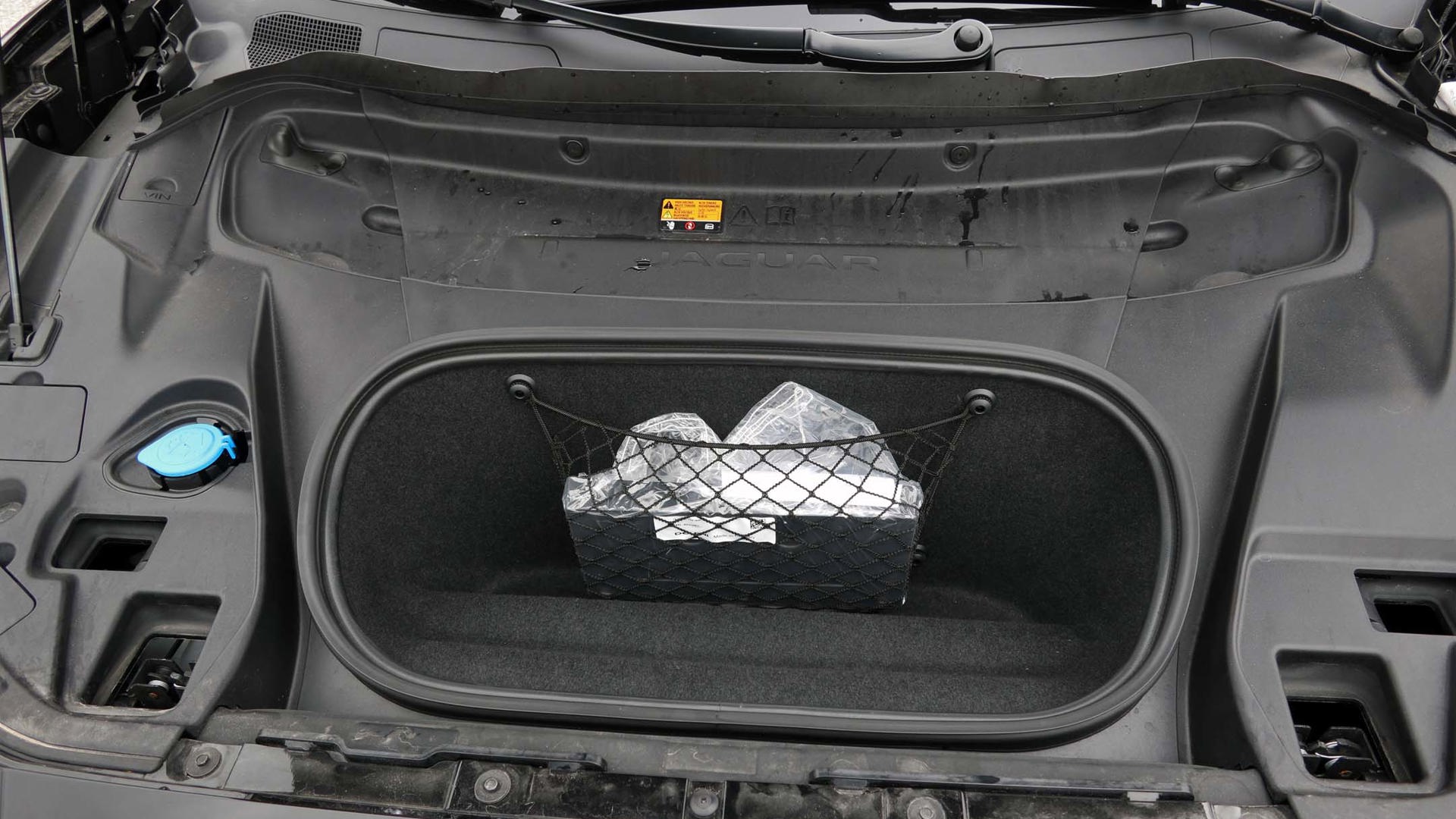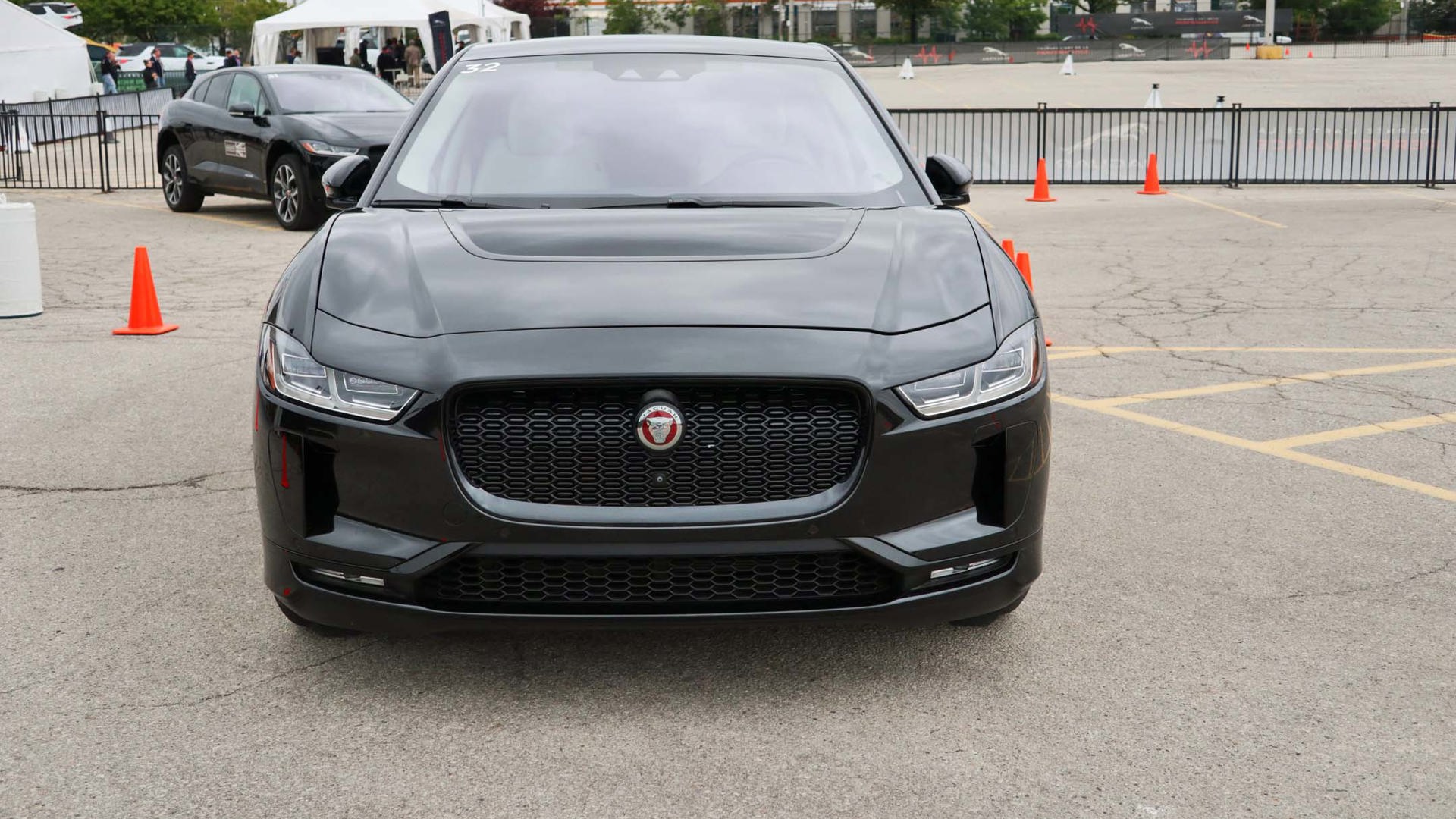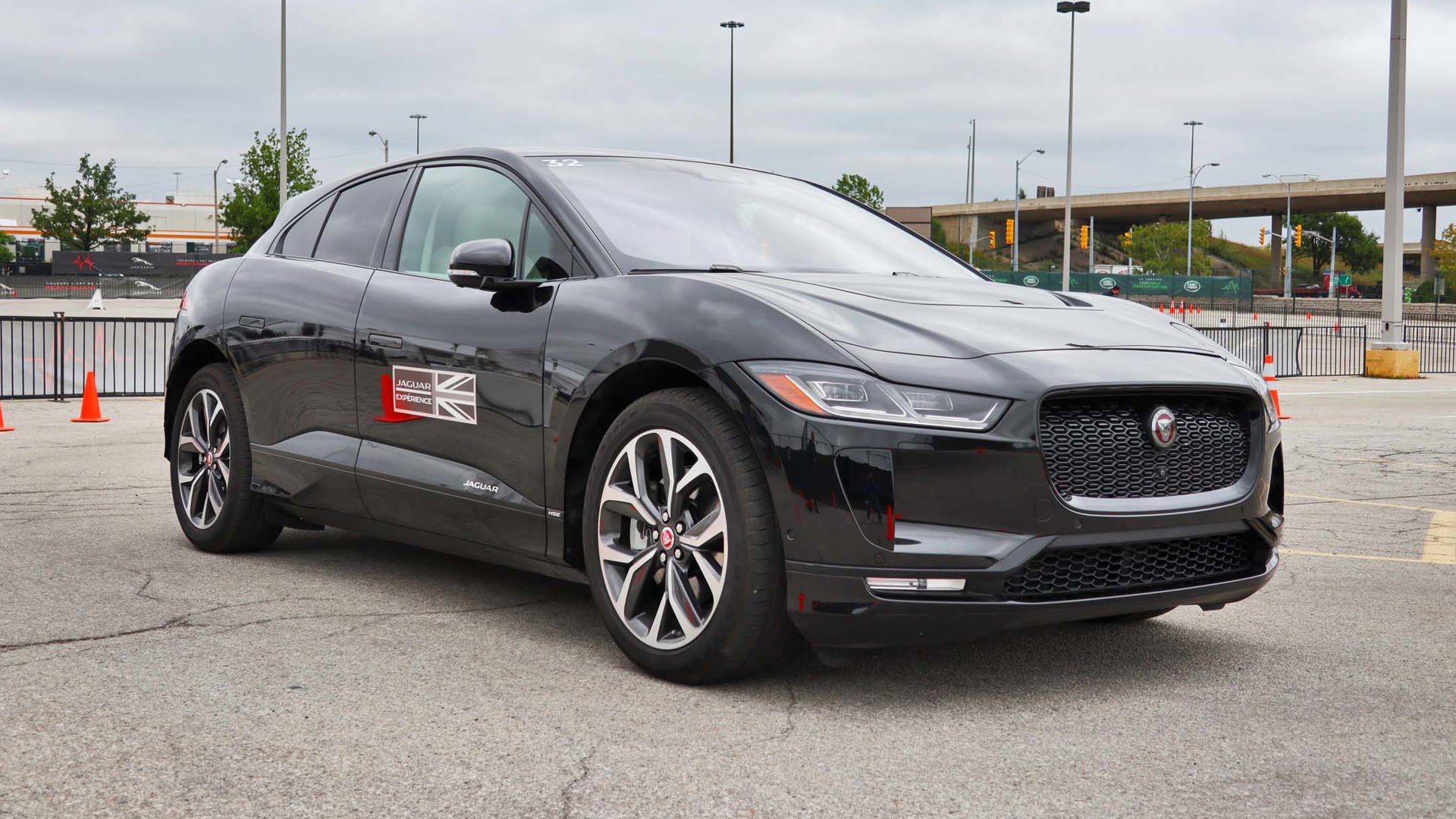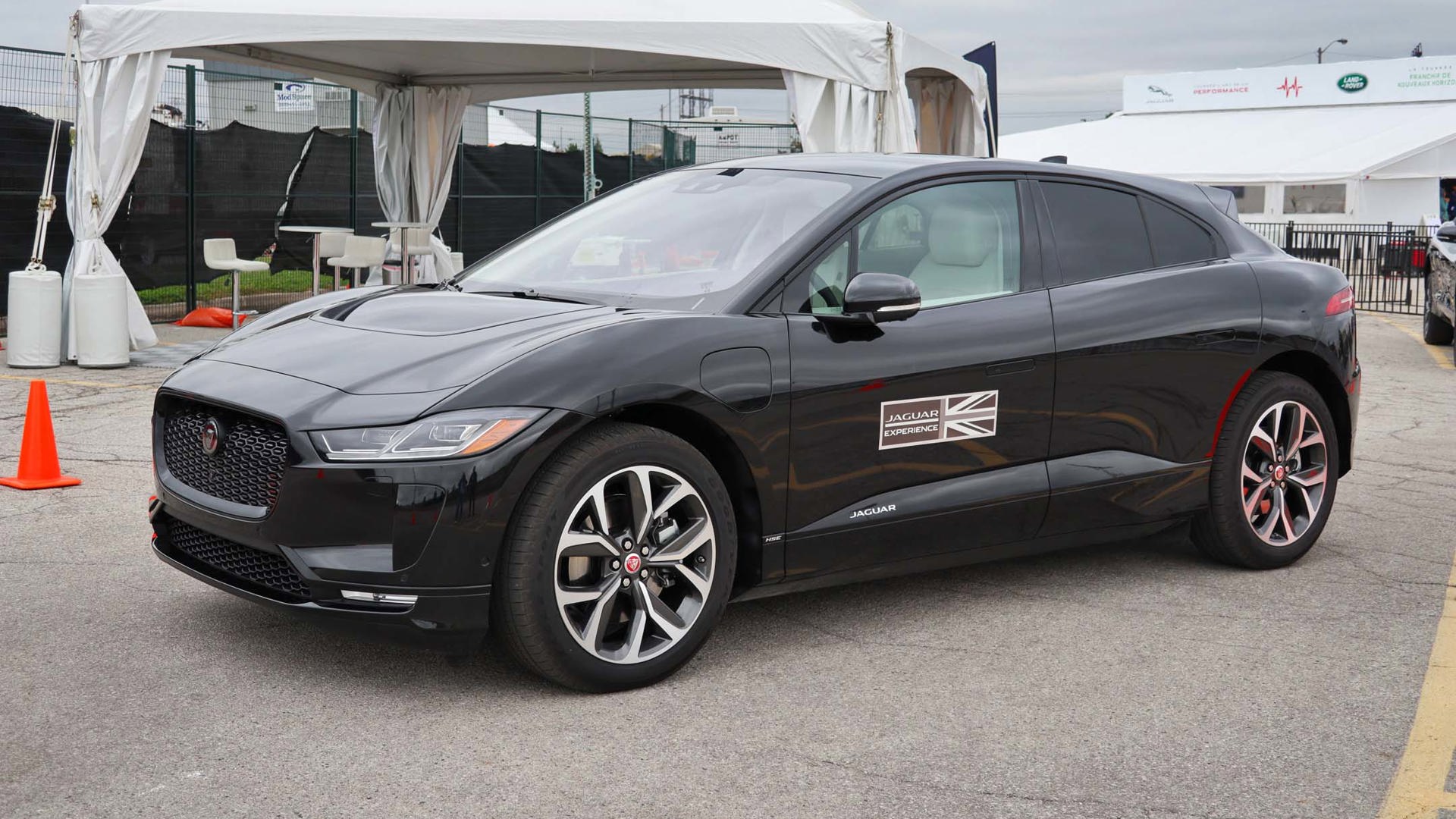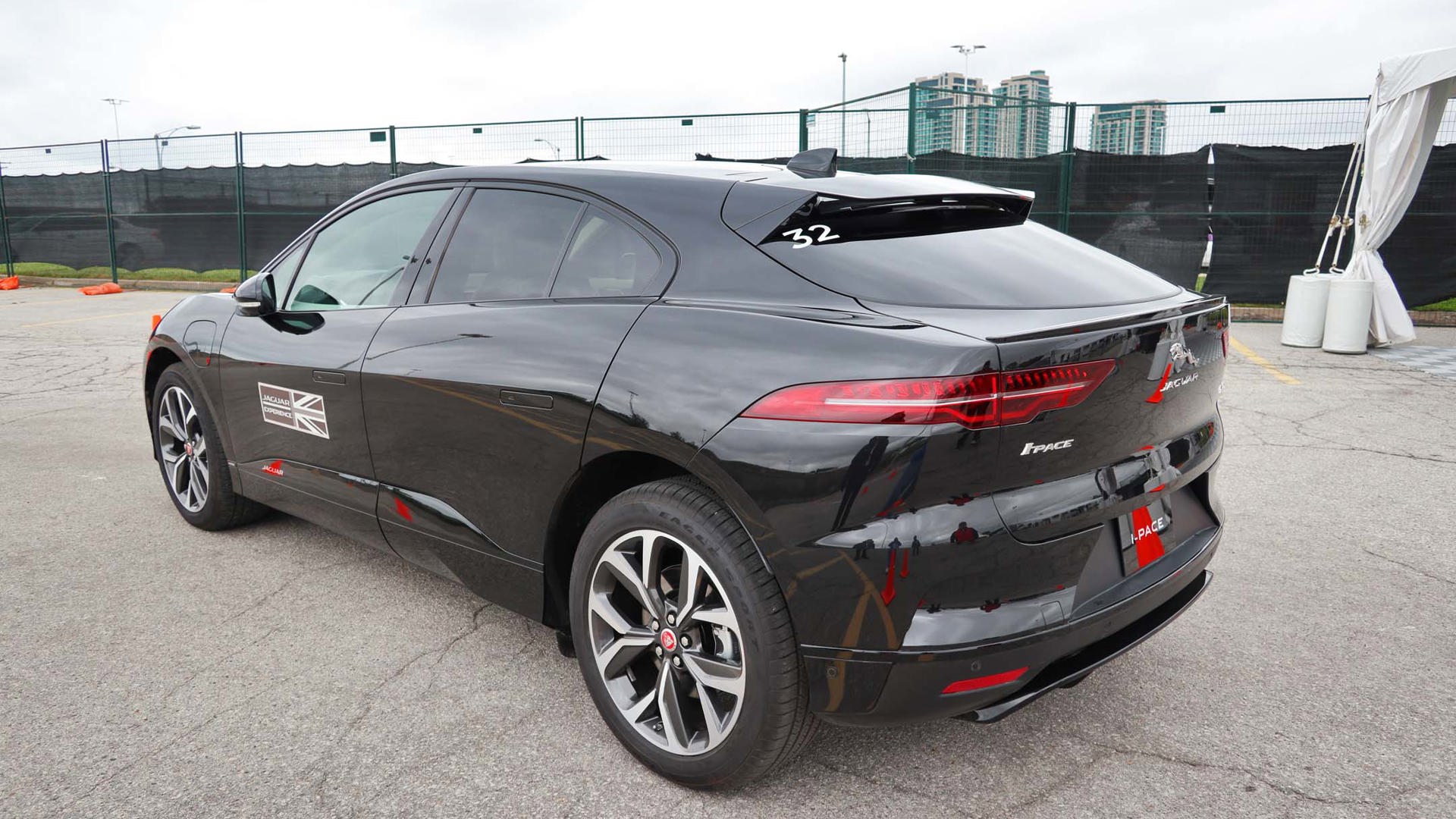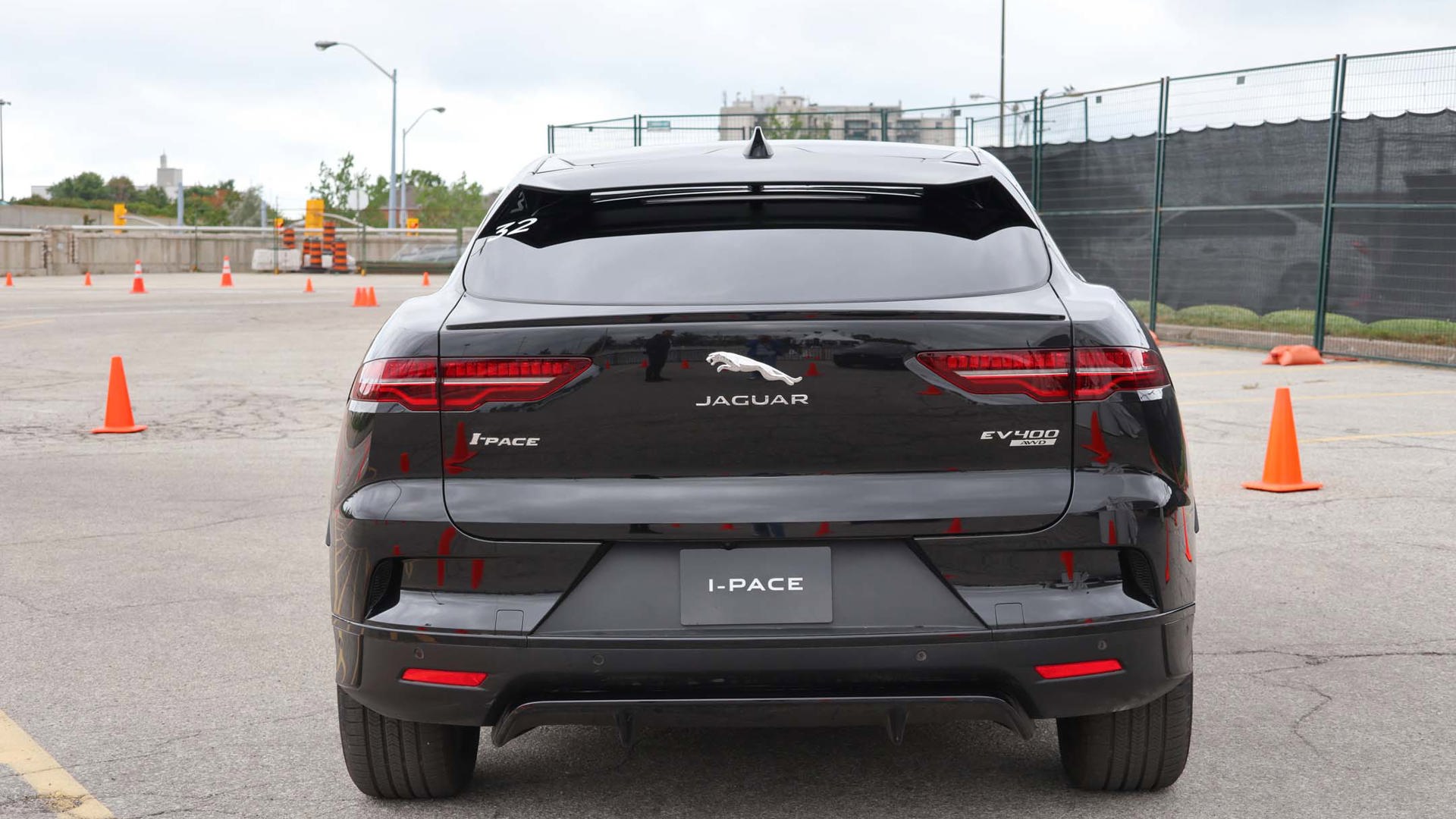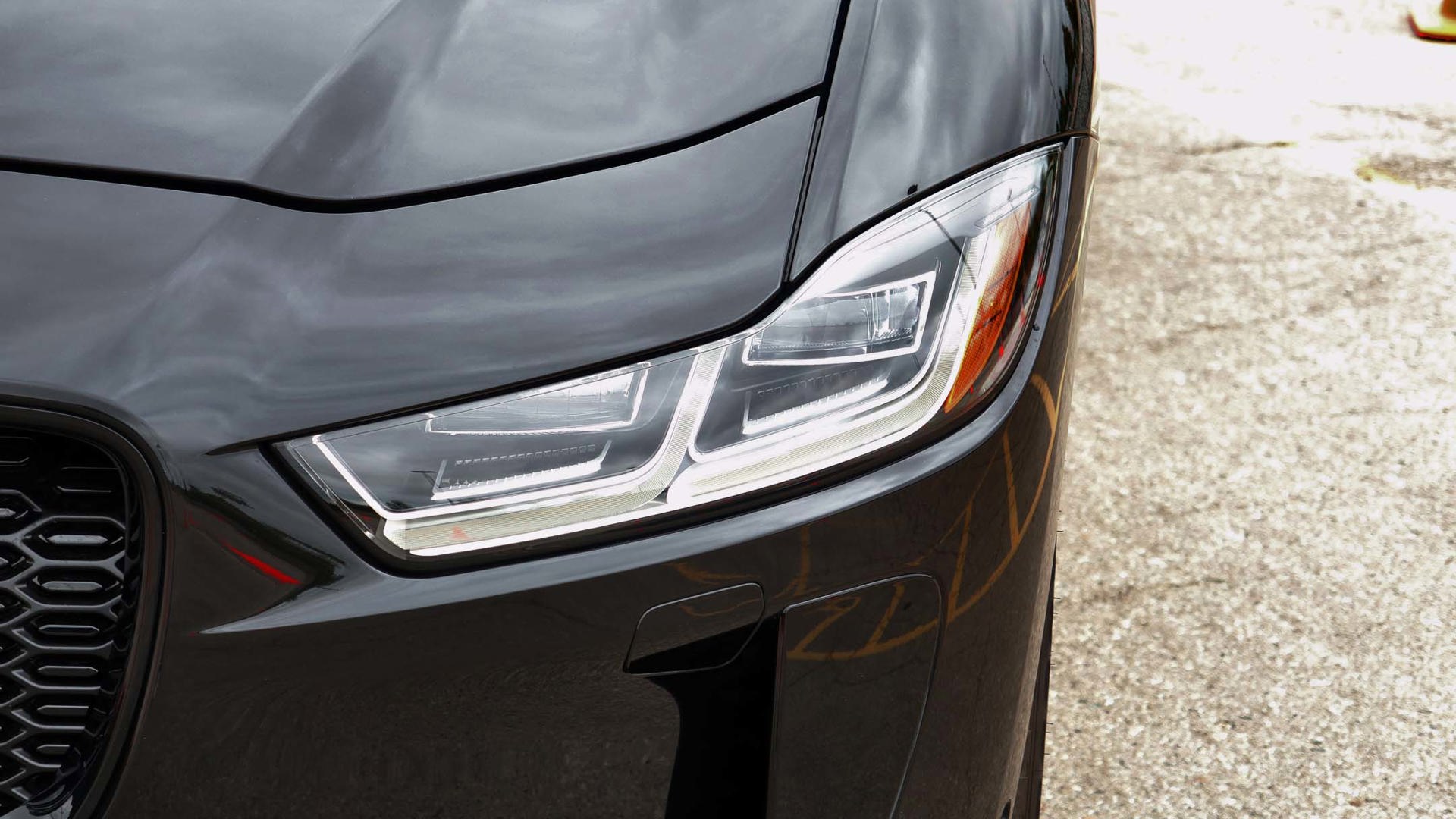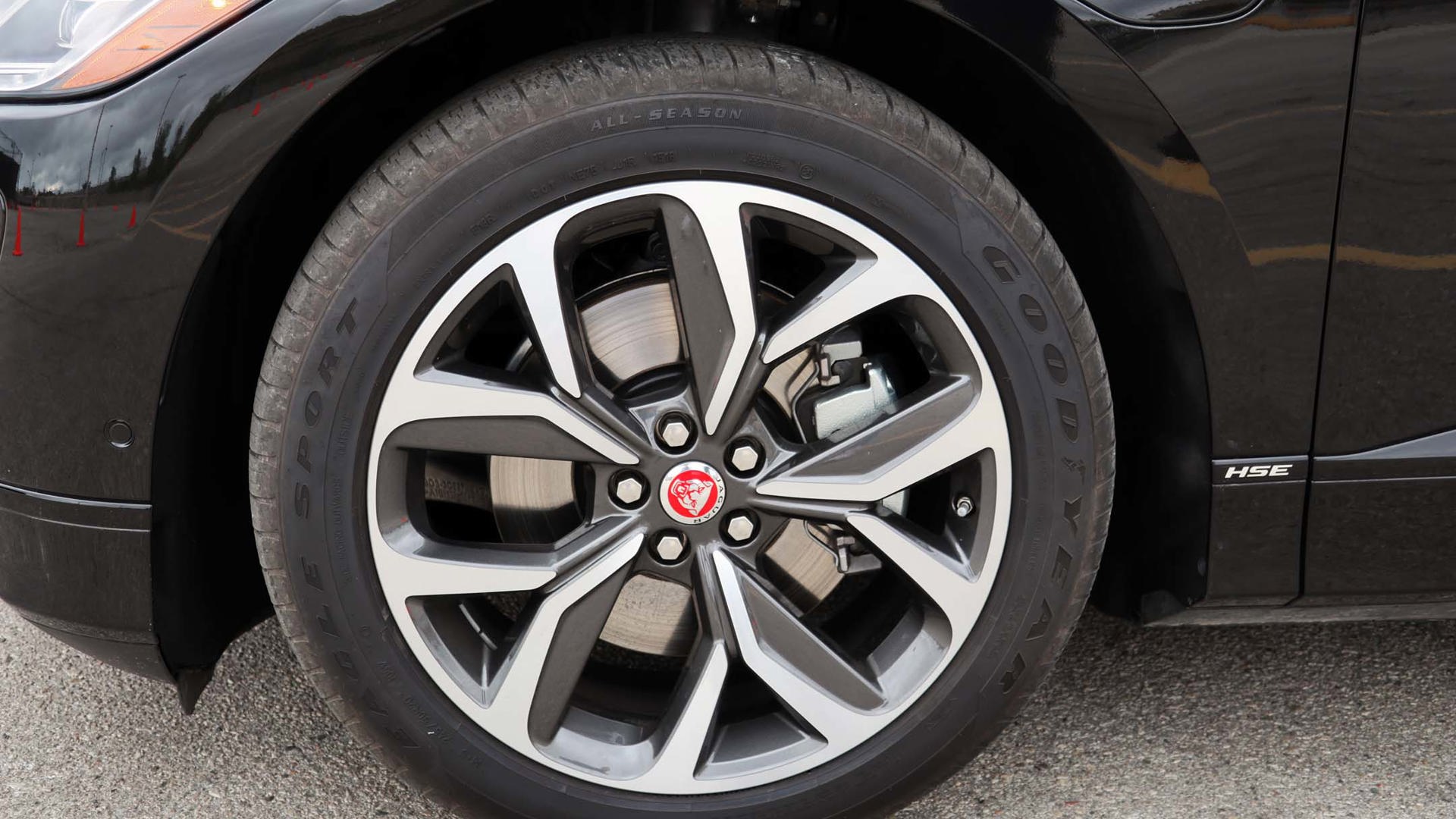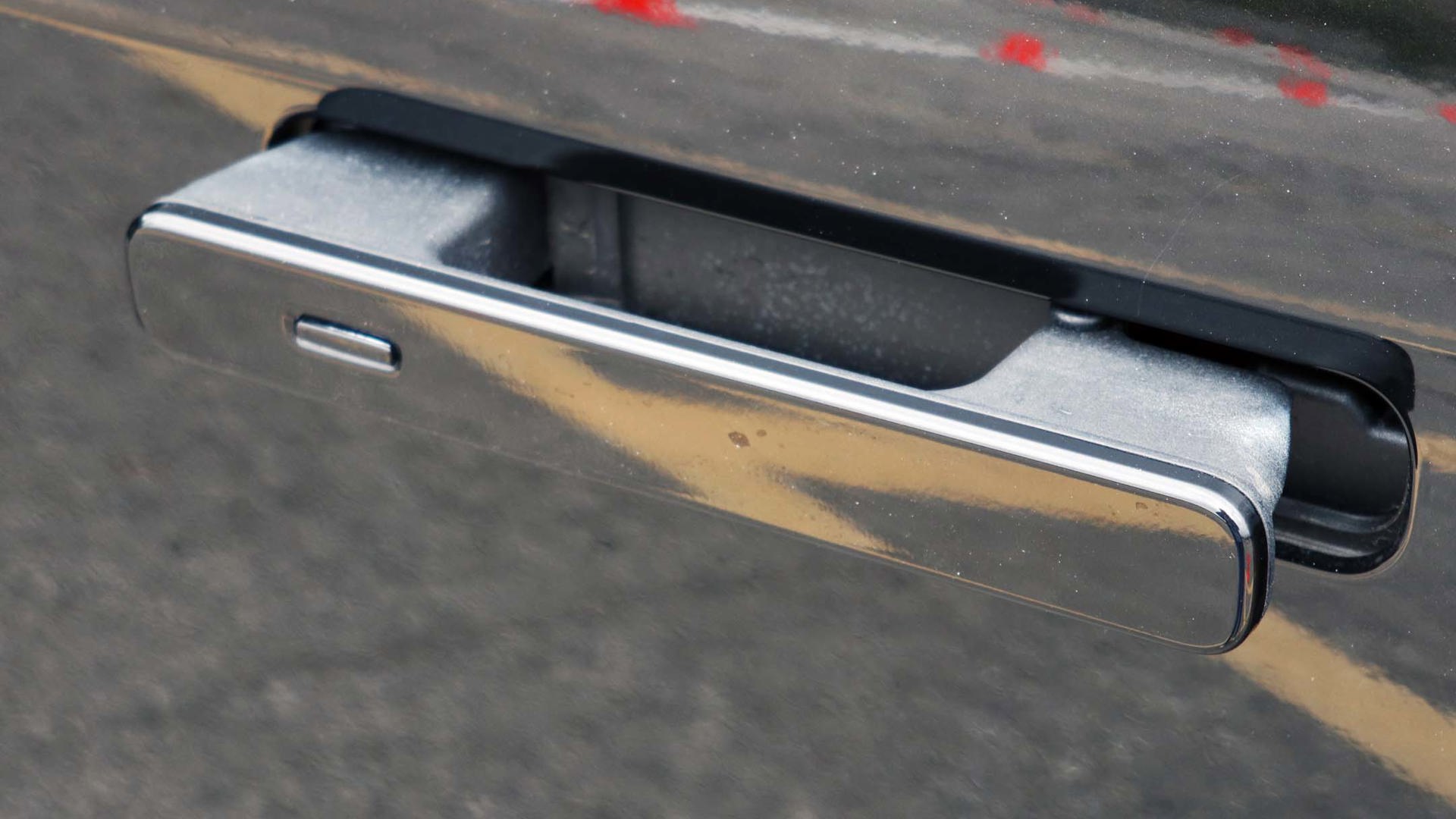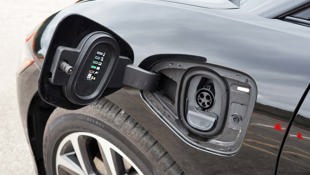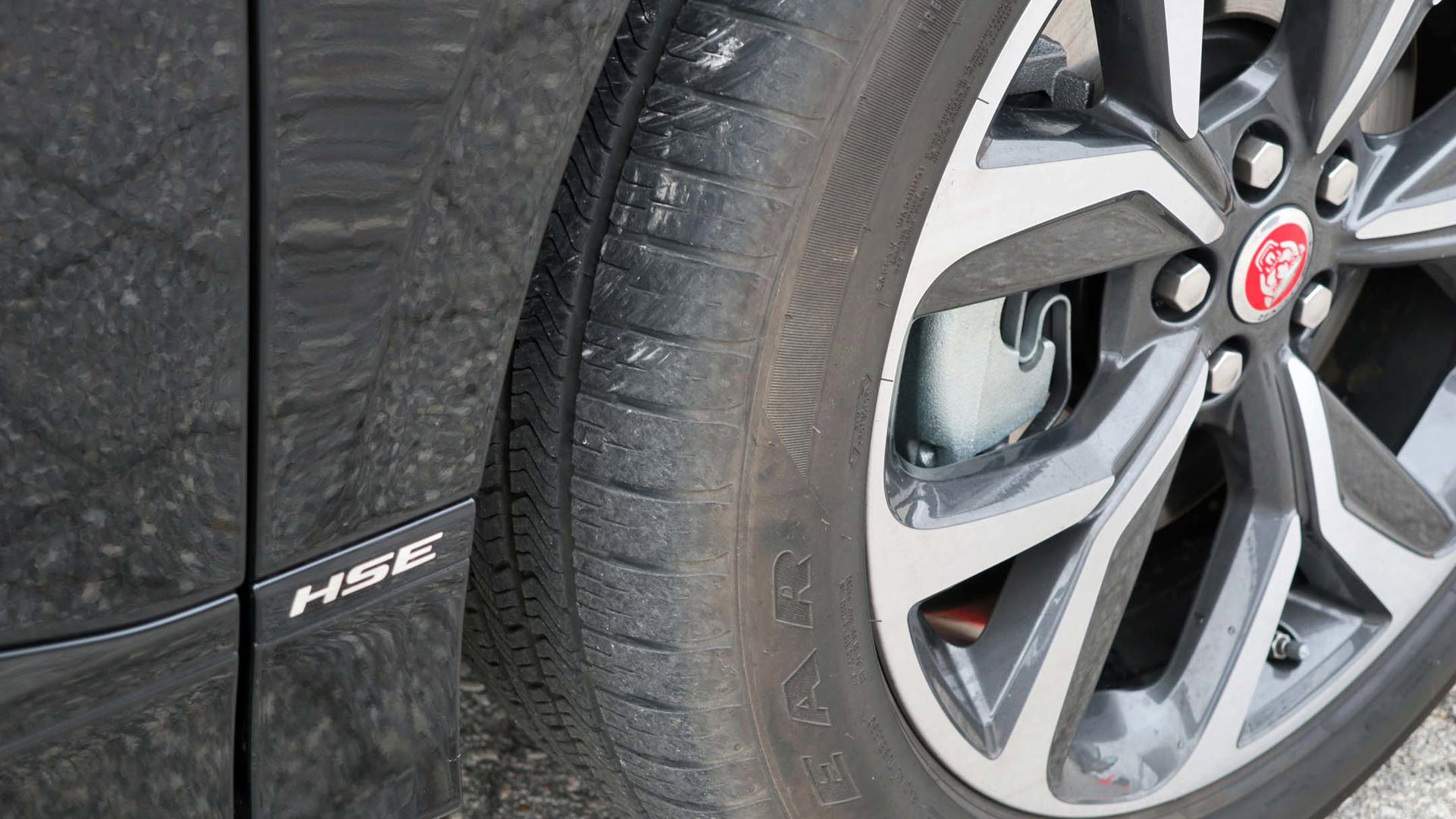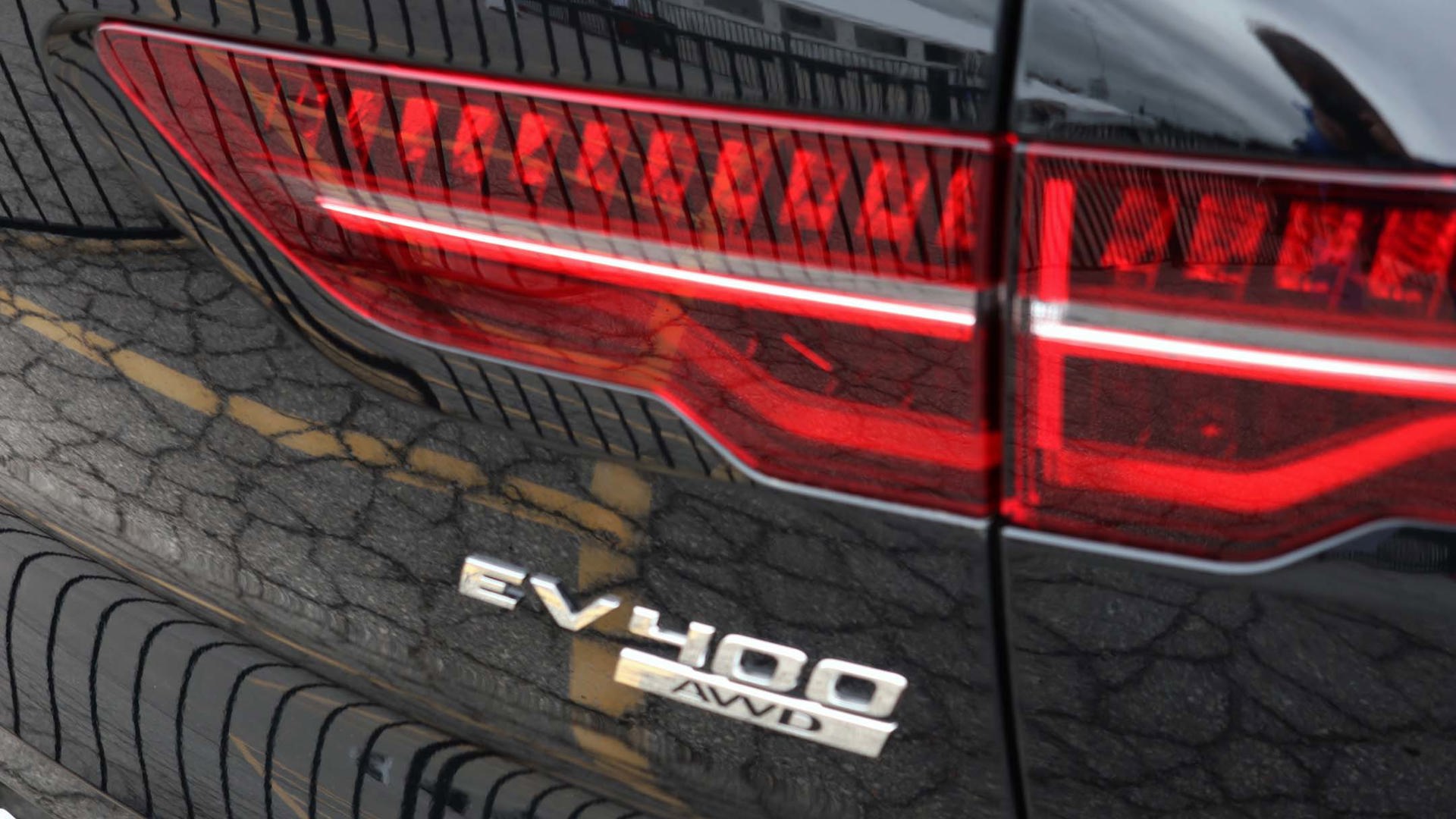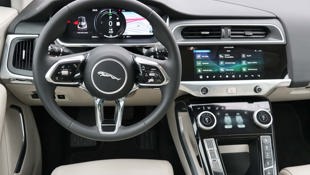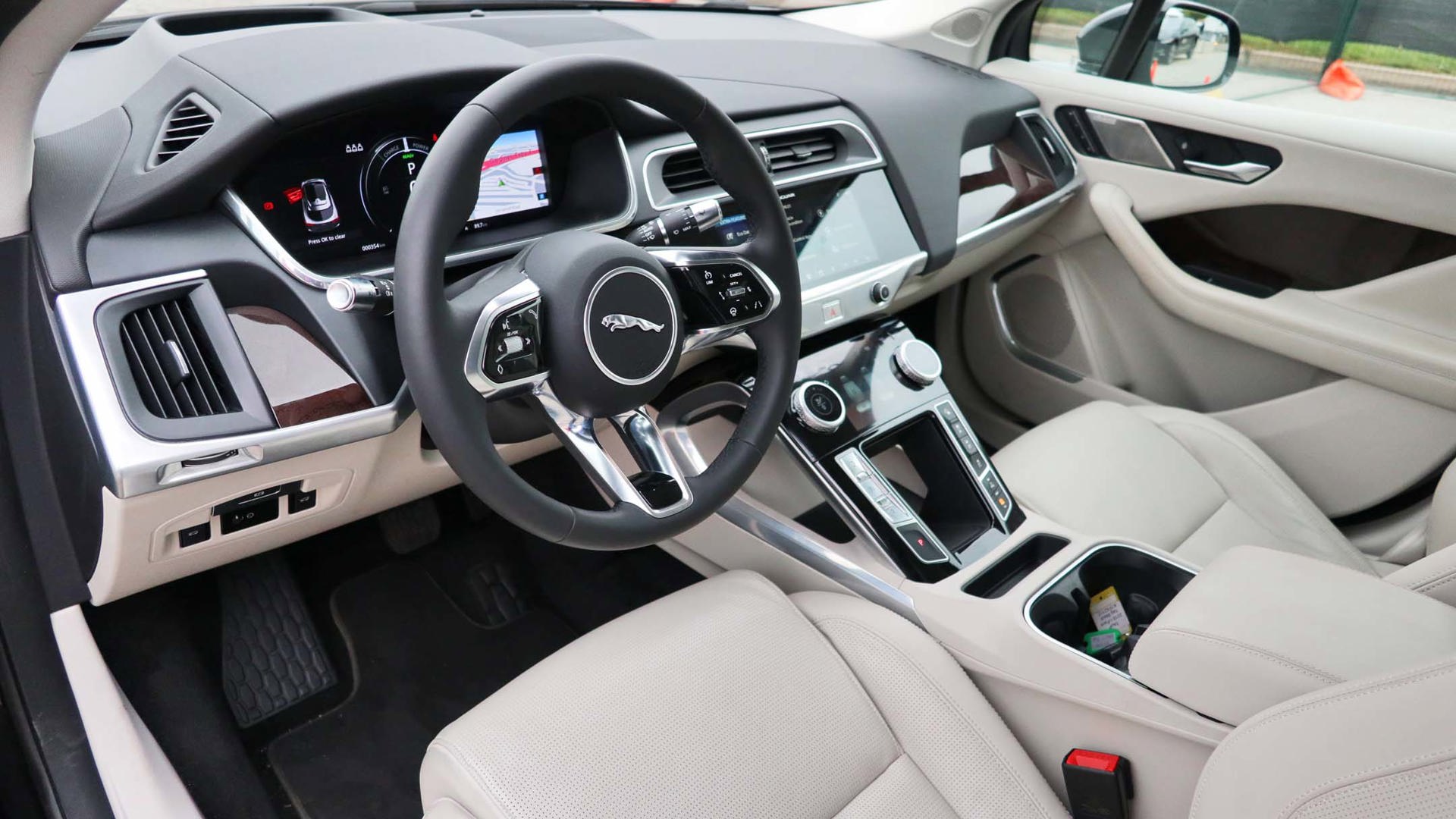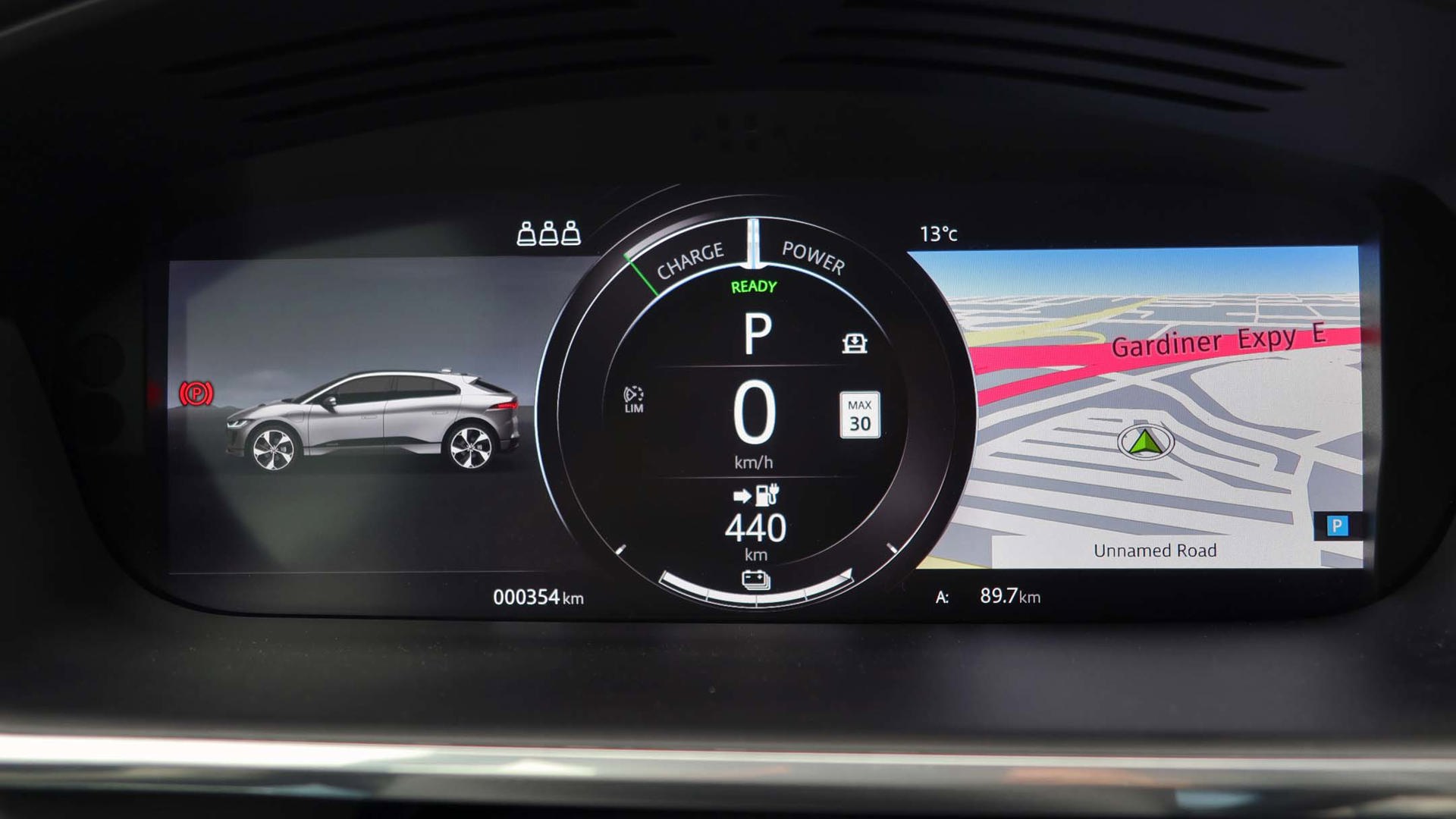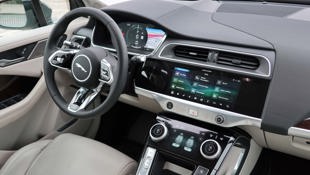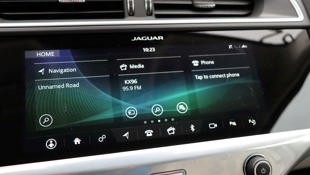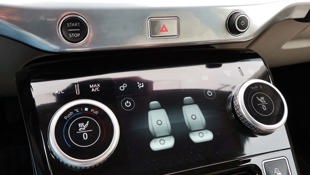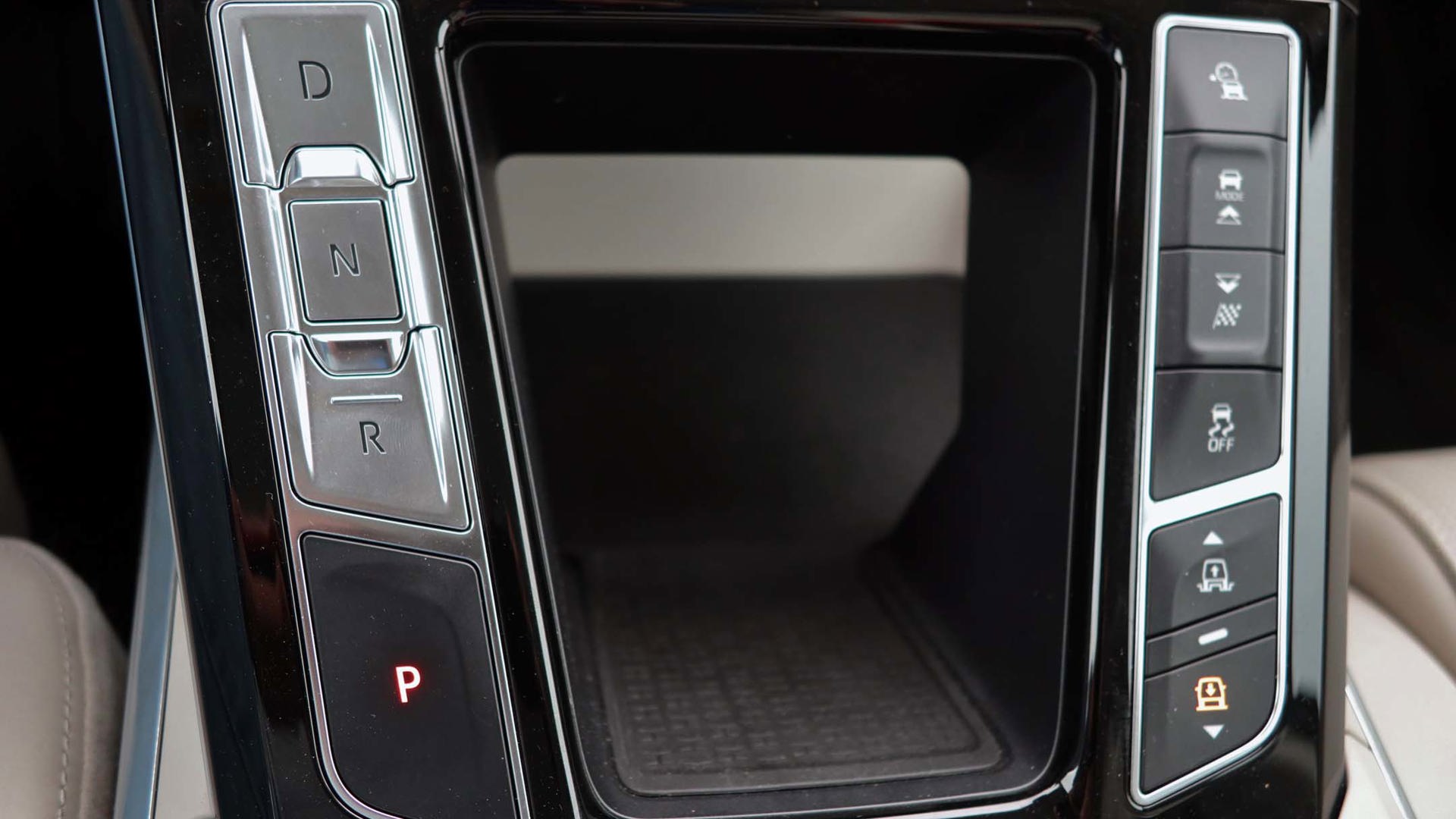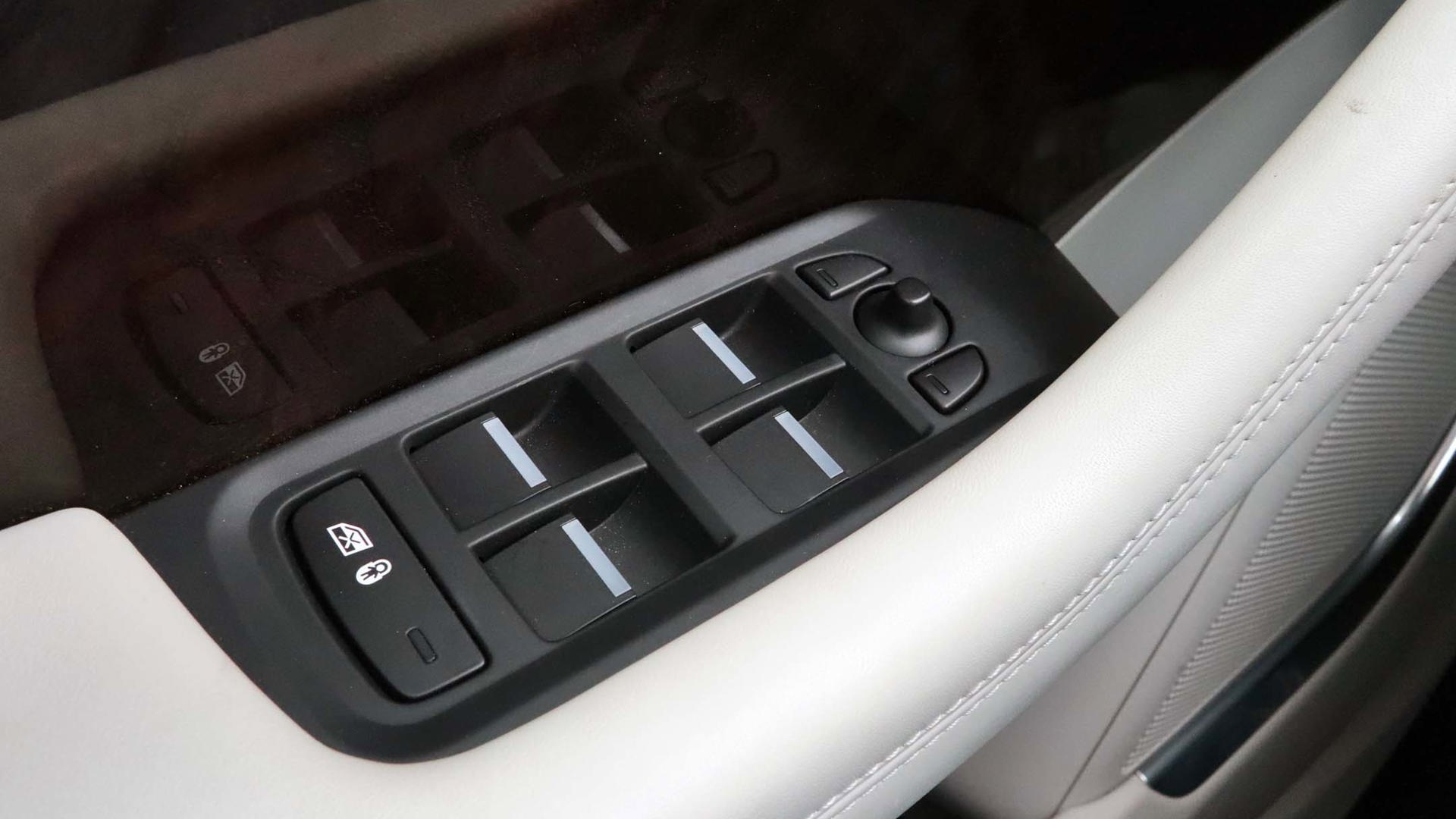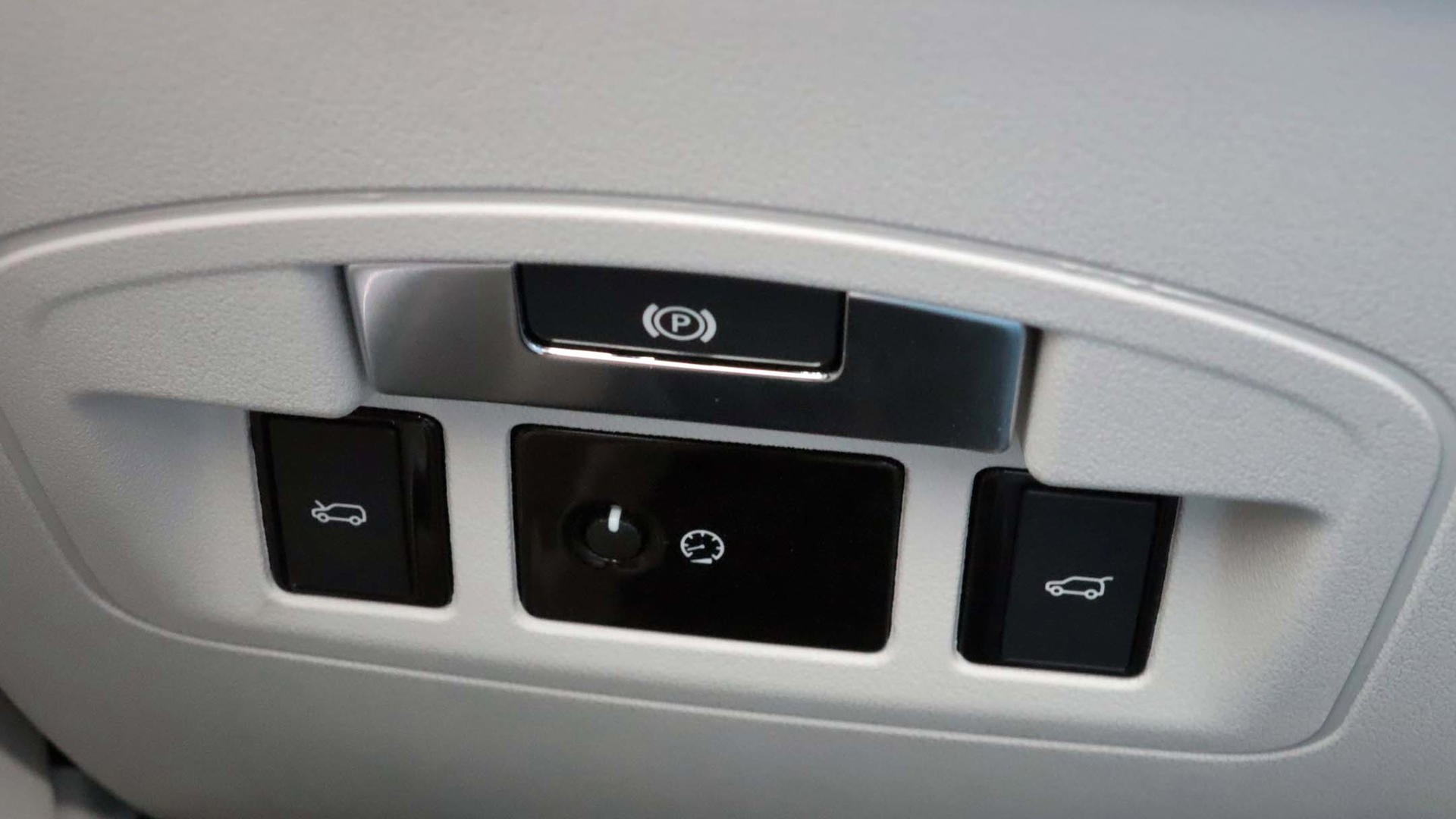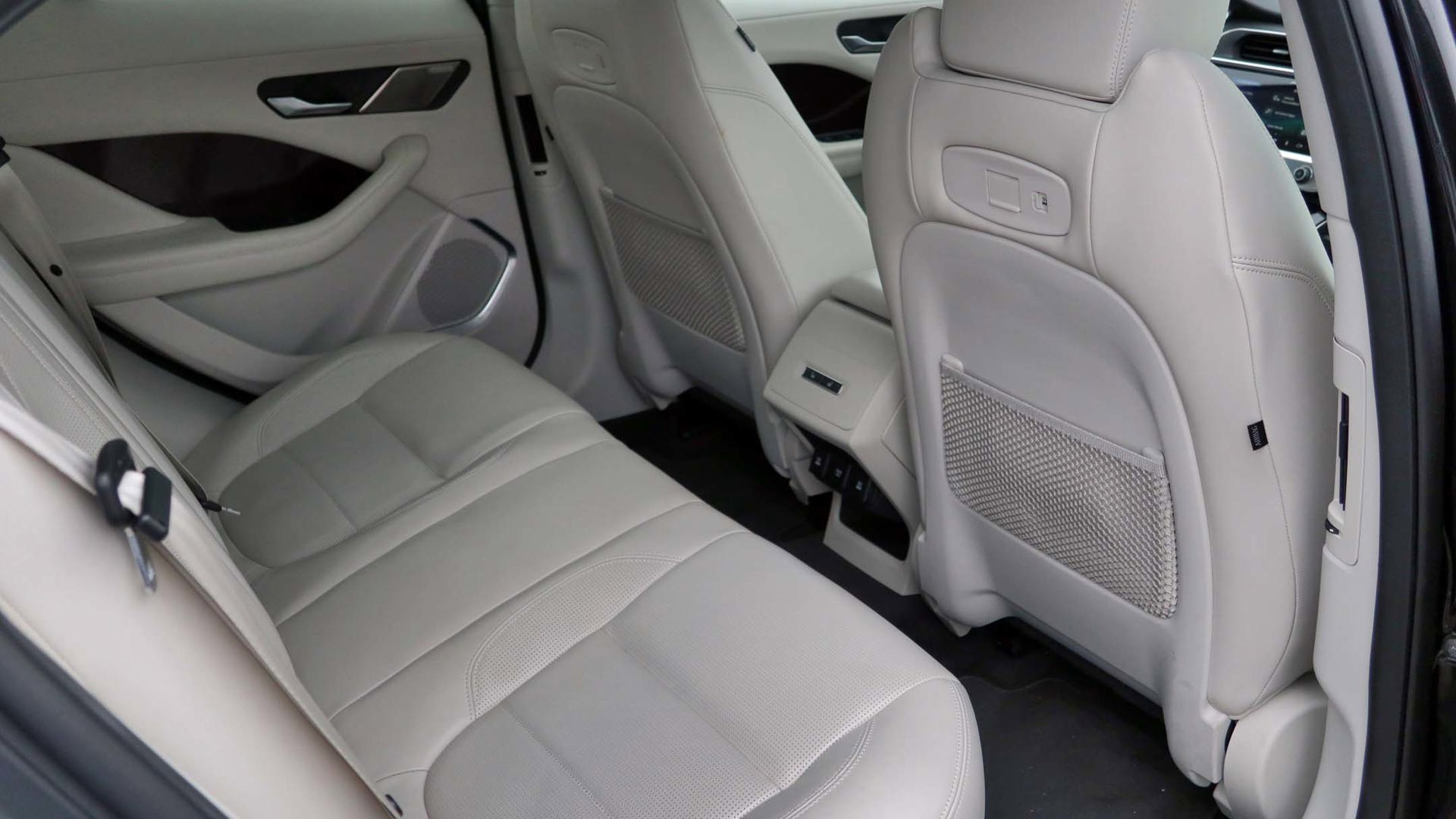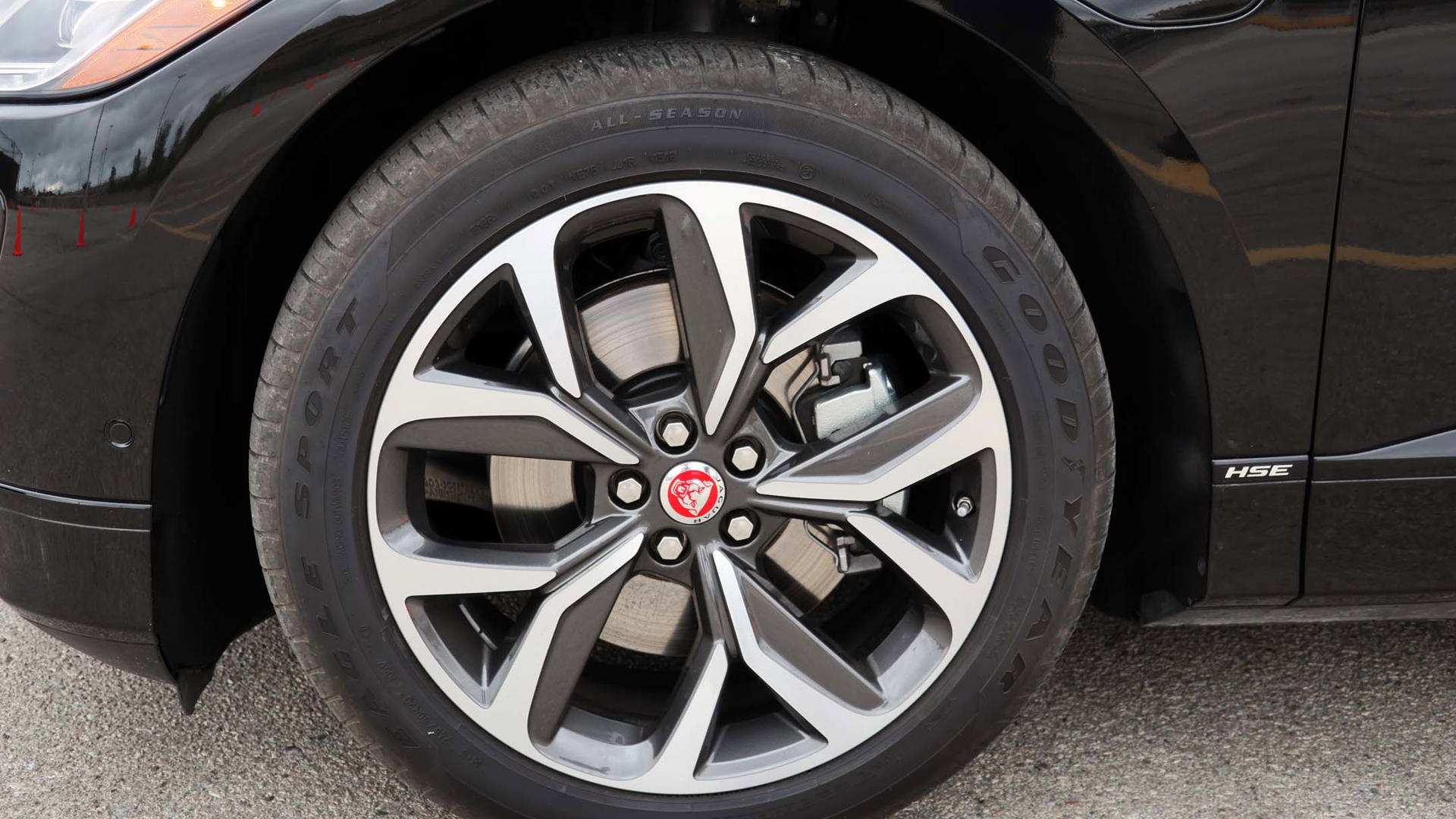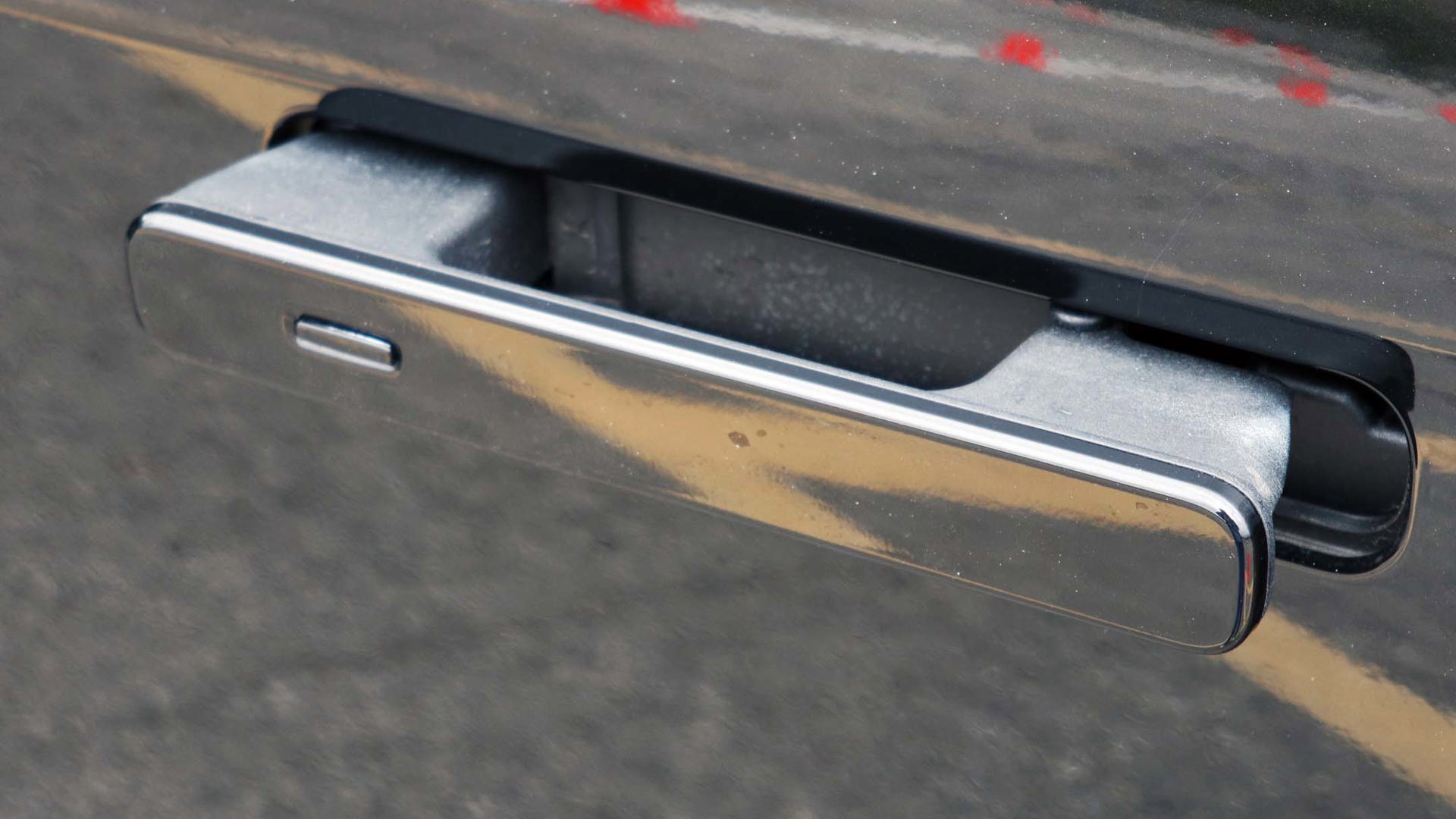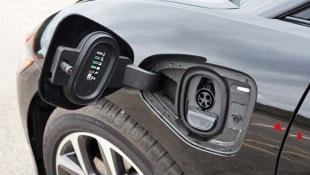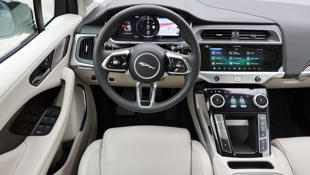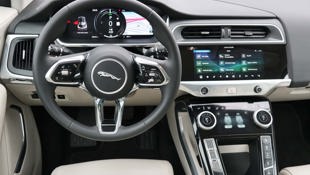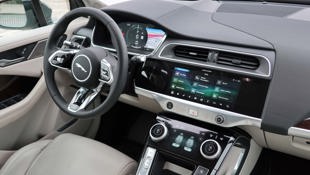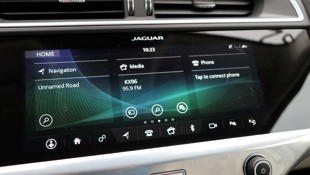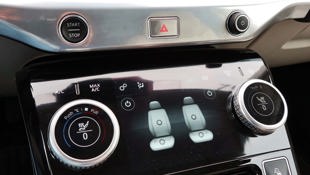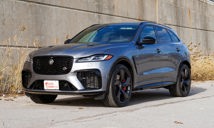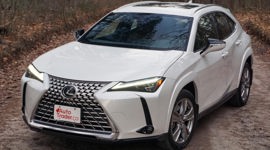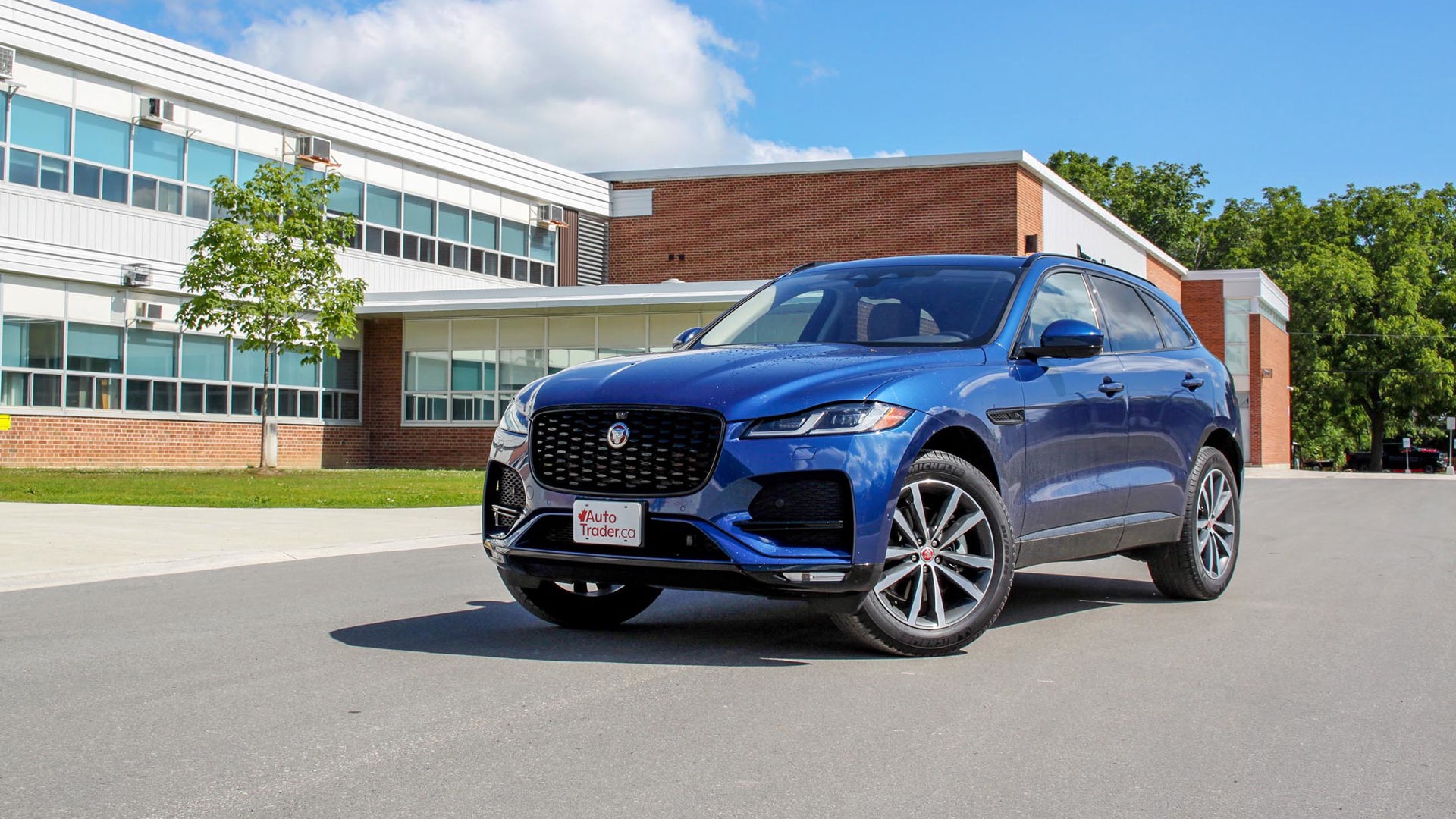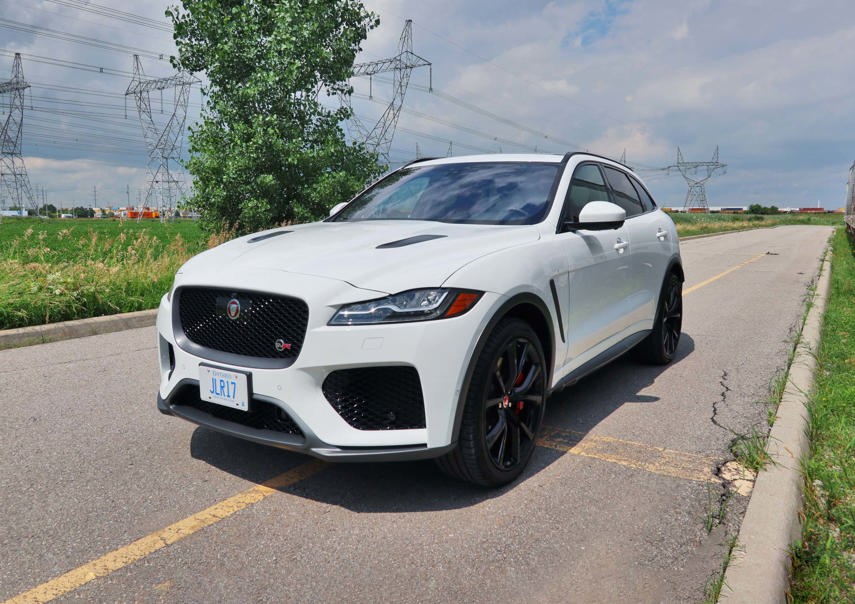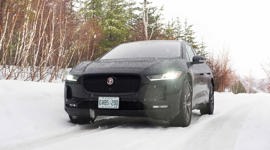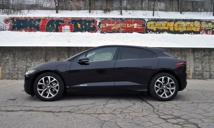Call it one of the great mysteries of life: why is Jaguar’s gas-powered crossover called the E-Pace, while its all-new electric one is the I-Pace? For some reason, the British company doesn’t equate “E” with electric as the rest of the world seems to do.
Jaguar’s on the right track.
But it may be a moot point, since from 2020, all of the automaker’s new vehicles will have some sort of electricity involved, whether it’s regular hybrid, mild hybrid, plug-in hybrid, or as with this new crossover, electricity alone.
I had an opportunity to take the I-Pace for a very short tour – a quick autocross route in a parking lot, as part of a larger and primarily consumer-oriented event – since my newly minted chariot hadn’t yet been assigned a licence plate and couldn’t go on the street. Much will depend on spending more time behind the wheel, of course, but even these limited tight turns and short straightaway show that Jaguar’s on the right track.
It’s Jaguar Land Rover’s first all-electric vehicle, a fact that isn’t lost on Wolfgang Hoffmann, president of the Canadian branch. Audi has introduced its E-Tron, and Mercedes-Benz recently unveiled the EQ C, but the I-Pace has already hit the ground at some dealers. “To beat the Germans to it is special,” he said. “It gives us a head start in the know-how, so we can conquest other brands. For some it may even be a Tesla replacement, where they can go to an established brand with a dealer network.”
The heart of the I-Pace is a 90 kWh battery, made by LG and stowed under the floor. It feeds two Jaguar-designed electric motors, one on each axle, to give the vehicle all-wheel drive. The combination creates 394 horsepower at 4,250 rpm, along with 512 lb-ft of torque that’s available right as the motors start, giving the I-Pace an acceleration time of zero to 100 km/h in 4.8 seconds, en route to a top speed of 200 km/h.
The published range is 378 kilometres, but of course much depends on how and where you drive, and just how cold or hot it is at the time. A Jaguar rep says it is “possible to get over 400 kilometres if you’re careful.” To assist with that, the I-Pace – like virtually all electric vehicles – can be pre-warmed or pre-cooled through a mobile app or the centre screen while it’s still plugged into the wall, which helps preserve range. The climate control system uses a heat pump, which captures heat from the outside air and from the warm electronic components for more efficient cabin heating. And the navigation system includes route topography, which estimates how much you’ll potentially gain or lose going down or up hills, and if necessary, optimize your route to save range.
There are three trim levels, starting with the S at $86,500; the SE at $92,500; and the HSE, which I drove, at $96,500. For the first year there will also be a First Edition package, at $103,500, which includes such exclusive items as its wheel design, premium LED headlamps, suede-style headliner, dark wood veneer, and branded sill plates.
Most buyers will pay the full shot on them. Ontario recently discontinued its “green” vehicle rebate system, but even before that, it was capped earlier this year on vehicles with an MSRP over $75,000. British Columbia doesn’t rebate vehicles over $77,000. Quebec cuts the rebate down at $75,000, and those buying an I-Pace in that province will be eligible for $3,000 back.
Jaguar Land Rover has only 25 stores across Canada, but all will carry the I-Pace, and Hoffmann believes that since both brands are in the dealership, Land Rover buyers – who currently can only get their brand electrified as a plug-in hybrid – may take a gander at what’s charging up on the Jaguar side of the showroom floor. (For the record, charging from depleted to full takes about ten hours on a 240-volt unit; if you can find a fast-charger, you can hit 80 percent of battery charge in about 40 minutes.)
The I-Pace is new from the ground up, and designed as an electric vehicle from the start; this is not an F-Pace with a battery. It has a more compact footprint, but the driveline packaging let the engineers give it an interior volume similar to that of the larger F-Pace, including a slightly larger trunk. There’s also a small “trunklet” tucked in under the hood.
The styling is swoopy. I prefer the sports-styled front end to the more conventional-crossover rear, but the overall effect, including a front grille that directs air up through the hood vent as needed to reduce drag, gives the I-Pace an aerodynamic drag coefficient of 0.29 – not the slipperiest on the market (Tesla’s Model S is 0.24), but wind-cutting nevertheless. Like Tesla, the I-Pace’s flush-mounted door handles slide out when you want to get in and then tuck away for driving. If there’s an issue to the Jaguar’s design, is that the hard-swept rear window, in combination with the back seat’s three head restraints, gives you almost no visibility out the rear.
The interior is simple but beautifully executed, with upper and lower touchscreens on the centre stack, a digital instrument cluster, and an open, cascading console with lots of small-item storage. Normally I’m not a fan of push-button transmission shifters, as the I-Pace uses; but tucking those switches sideways is how that storage space arrives – and there’s no bit-o’-battery-juice needed to raise Jaguar’s traditional disappearing dial shifter up into position.
Just about everybody making electric cars these days does a good job of it, and the I-Pace is no exception. Its aluminum body shaves off some weight, but batteries are heavy, and the overall curb weight rings in a 2,670 kg. Still, it doesn’t feel that heavy when it’s tossed around. The battery, slung low between the axles, lowers the centre of gravity and helps achieve pretty close to 50:50 weight distribution.
Selecting the Dynamic driving mode tightens the steering, suspension, and throttle response; you can also select Comfort or, for maximum battery range – but minimum fun – you can opt for Eco. The air suspension adjusts automatically, hunkering down on the highway for air flow, but you can also raise it for rough roads (the I-Pace can ford 500 millimetres of water, for those in cottage country) or lower it for easier entry and exit.
The rate of regenerative braking can also be adjusted, from almost none to heavy force. In stop-and-go traffic, you can adjust the I-Pace so it stops when you take your foot off the throttle, giving you “one-pedal” driving that, under most circumstances, doesn’t require you to use the brakes.
Charging infrastructure still remains the major hurdle to electric vehicles, but with so many players in or entering the game, it looks like battery-powered cars are here to stay, even if they remain a very small niche for some time to come. I’m still not sure why the electric Jaguar doesn’t get the “E” preface, but on this quick drive, it looks like it has the electric chops it needs for this high-end, high-voltage market.
